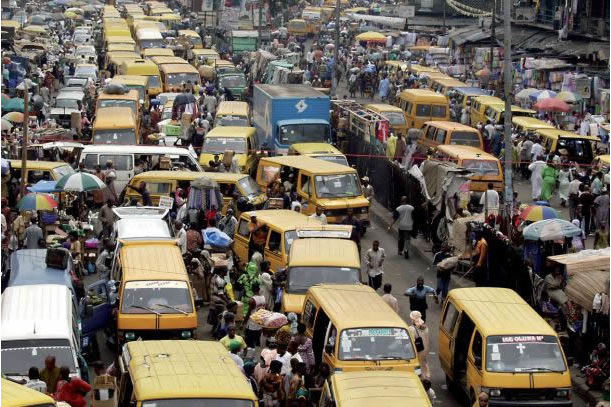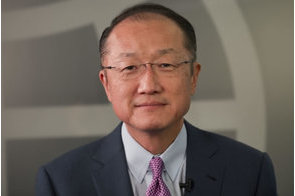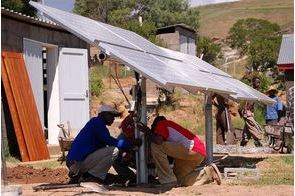Africa’s urban opportunity

Summary
Research from the New Climate Economy has shown that low-carbon cities could save $17 trillion globally by 2050.
Africa’s prospects over the next three decades will be determined largely by how well it manages rapid urbanization. The challenge is certainly daunting. But the right approach can propel the continent toward a more stable and prosperous future.
Over the next 30 years, 22 million people annually will move to Africa’s cities. By 2050, Africa’s total urban population will stand at 1.34 billion people – triple the number in 2010. While urbanization is proceeding most rapidly in East and West Africa – for example, the population of Lagos, Nigeria’s largest city, is expected to top 25 million in the next 15 years – the trend is apparent in all regions of the continent.
The payoff of the successful assimilation of new urban residents would be massive. Labor is generally more productive in cities, and the concentration of people in urban spaces generates markets and economies of scale in services delivery. The hope is that Africa’s commodity-driven economies can reap the same “urban dividend” that Europe, North and South America, and East Asia did during their respective urbanization phases.
But there is no guarantee that this will happen. For starters, half of all Africans continue to live on less than $1.25 per day, and only 4% live on more than $10 per day. This makes it difficult to raise financing for all-important urban infrastructure through traditional user-pays models.
Moreover, the continent’s local authorities are often contested, inadequately supported by national governments, and still grappling with the basic processes of defining boundaries, installing governance structures, and communicating with their constituents. As a result, they are not yet able to conduct asset inventories, oversee land-tenure systems, or marshal adequate financial resources. The annual budget of Accra, the capital of Ghana, is just $12.50 per capita.
Complicating matters further, Africa’s urbanization challenge comes at a time when the impact of climate change is becoming increasingly visible. Climate change is already affecting the availability of food and water in some places, and contributing to the spread of some diseases. Soon, Africa’s urban infrastructure – already strained by rapid population growth – will be feeling the effects. Responding to climate change could cost the continent as much as $50 billion per year by 2050.
Given all of this, the prevailing outlook for Africa’s ability to adapt to both urbanization and climate change is decidedly gloomy. But it need not be. Given that so much of Africa’s urban environment is yet to be built, the continent has a unique opportunity to get it right the first time, establishing itself as a world leader in high-productivity, low-carbon development, supported by recent technological innovations.
In fact, a shift in that direction has already begun, with African cities finding cost-effective, environmentally friendly solutions to critical challenges. Confronted with chronic electricity shortages and under-resourced state-owned energy utilities, a growing number of households, companies, and governments have embraced independent and local power producers capable of meeting demand for energy quickly. M-KOPA Solar, for example, has expanded rapidly across East Africa, with its pay-as-you-go service aimed at off-grid households – households that are tired of depending on unsafe, overpriced, and unreliable energy sources like kerosene, batteries, and generators.
Similar progress is being made in improving mobility. Although only 6% of Africans own cars, the continent’s urban infrastructure has long been overwhelmed. In Lagos, for example, commuters collectively lost three billion hours per year to traffic congestion from 2007 to 2009. But recent investment in bus-oriented transport infrastructure, with dedicated lanes for environmentally friendly mass-transit vehicles, has improved the situation considerably. Similar programs are currently being implemented in at least nine other African cities.
Another key challenge – essential to improve health, protect the dignity of urban dwellers, and mitigate environmental risks – is to reduce backlogs in the collection of solid waste. Residents of the informal settlement of Kibera, outside Nairobi, are addressing this problem with “bio-centers” – public sanitation facilities run by locals that generate revenue from the sale of harvested methane gas.
Such examples show that budget and governance constraints on the provision of some services can be overcome. But Africa’s environmentally friendly approach to urban service delivery remains nascent – and in many ways precarious. There is an urgent need for more efficient utilities, formal infrastructure, and publicly provided bulk services.
Today’s innovations also remind us that the best responses to climate change are those that address people’s daily needs, including, in the African urban context, creating the type of jobs that local unemployed people can fill. When scaled, these approaches to service delivery will generate virtuous cycles of fiscal efficiency, employment, risk reduction, and increased competitiveness in a climate-sensitive global economy.
Research from the New Climate Economy has shown that low-carbon cities could save $17 trillion globally by 2050. With so much of Africa’s urban environment to be built in the next 30 years, its cities stand to secure much of this saving.
Success will require that African leaders acknowledge the urbanization trend as an economic and climate-action opportunity, and take the appropriate steps, including creating new funding models and partnerships and adjusting the responsibilities and powers of municipal authorities. In this effort, they should draw on the expertise of bodies that are already active in this area, like the C40, a network of cities that are tackling climate change.
In this process, African leaders will undoubtedly confront resistance from their societies’ vested interests. But they should press forward anyway. The opportunity that climate-smart urbanization represents is simply too good to be missed.
- Trevor Manuel is former Chair of the South African Planning Commission, former Finance Minister of South Africa, and a member of the Global Commission on the Economy and Climate.
- Felipe Calderón, former President of Mexico, is Chair of the Global Commission on the Economy and Climate.
Source: Project Syndicate
Related
-
Access Bank’s environmental sustainability credentials
Through its Green Social Entrepreneurship Program, Access Bank has empowered 238 entrepreneurs, 70% of whom are women.
-
World Bank launches initiative to accelerate climate financing
Innovate4Climate Finance and Markets Week is a global platform to discuss the future of climate finance.
-
First two projects for Africa Climate Fund get approval
The AfDB-managed ACCF was established in April 2014 with a EUR 4.725 million contribution from Germany with the objective ...










